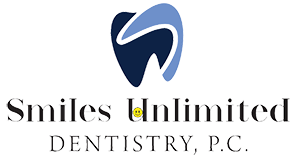There have been may great advances in dentistry. Particularly, advances in dental materials have come a long way. One such advancement is the innovation in the durability, versatility, and biocompatibility of porcelain to allow for the fabrication of all ceramic crowns. For more than three decades, the use of metal in dentistry was widespread and has been useful and predictable. These crowns were very durable, but not as esthetic with regards to the translucency of the porcelain. In fact, the first ceramic crown was introduced in 1903 by Dr. Charles Land. An increased amount of translucency within porcelain allows for all ceramic restorations to look more natural. Porcelain fused to metal crowns or PFM crowns would cause an increase in opacity, meaning that less light would reflect through the crown, making the crown not blend in as well with the rest of your teeth. Emax and zirconia crowns are considered to be the most popular and resilient types of ceramic crowns. However, there are both advantages and disadvantages to all ceramic crowns that every patient should be aware of when discussing treatment with their dentist.
All ceramic crowns are well-suited for those patients that have minimal space between their teeth, such as between anterior teeth because all ceramic crowns require less prepping or cutting away of tooth structure. Due to less prepping, all ceramic crowns require less material and therefore feel less bulky or heavy. Those patients with metal allergies can also benefit with all ceramic crowns. Also, the biocompatibility of all ceramic crowns are better than metal which causes less gingival irritation or recession. Esthetically, there are no other crowns that match natural dentition as well as all-ceramic crowns. The esthetic demand in dentistry is the reason why these crowns have become so popular. All ceramic crowns cannot be matched with regards to appearance because the advances in porcelain have allowed the material to appear as close as possible to our natural enamel.
The disadvantages of these crowns is that compared to porcelain fused to metal crowns or all metal crowns, they are more susceptible to cracking or breaking. They are also contraindicated in patients with limited interoclusal distance due to a deep overbite, supraerupted opposing tooth, or short clinical crowns. Those patients that suffer from severe bruxism may not also benefit from all-ceramic crowns because they are more susceptible to wear or breaking, unless the patient invests in a nightguard to protect the all ceramic restorations. Finally, it is contraindicated in those teeth that require significant subgingival preparation that limits the practitioner’s ability to maintain a dry field.
The advances in dentistry improve continuously. In fact, advances in all-ceramic restorations are being improved constantly. Nowadays, dentists have the means to fabricate all ceramic crowns with CAD-CAM technology and patients can get their crowns in one visit! So next time you are at the dentist’s office, make sure to ask your dentist about these all ceramic restorations which can improve your smile significantly!
